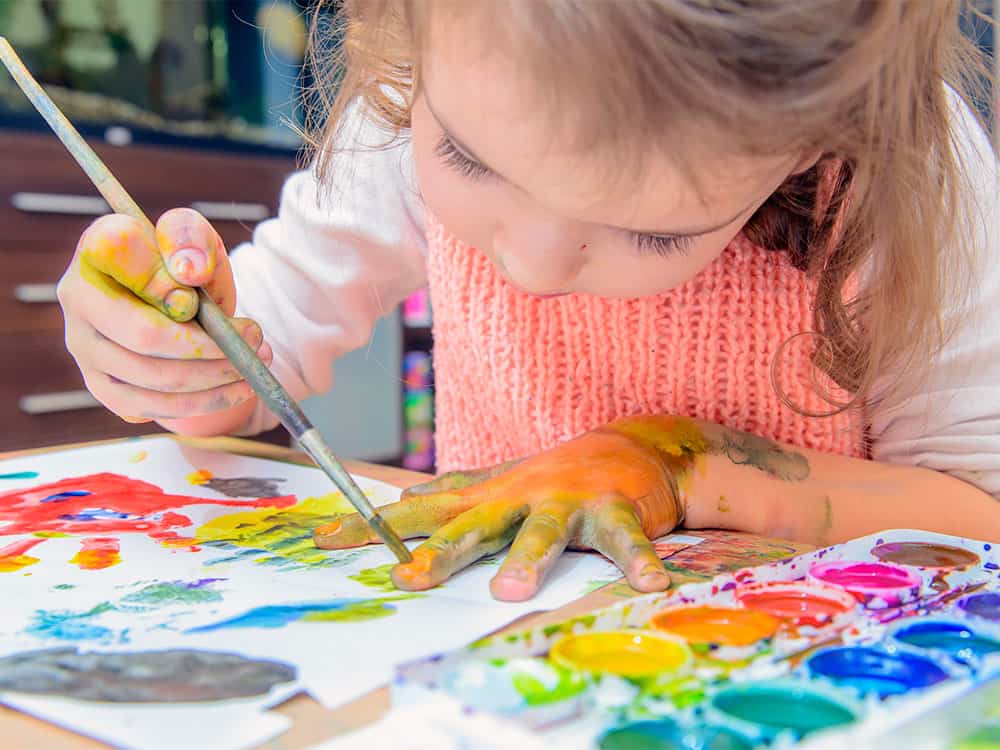Unleashing Creativity: Top Creative Play Examples for Kids of All Ages
Hey there, amazing parents and guardians! Are you on the lookout for ways to sprinkle a little magic into your child’s playtime? Well, you’ve hit the jackpot! Whether it’s a rainy day indoors or a sunny afternoon in the backyard, there’s always an opportunity to engage in creative play. And the best part? You don’t need any fancy gadgets or expensive toys to get started. Here’s a handy guide that’s brimming with fun creative play examples tailored for kids of all ages. So, let’s dive in and get those imaginative wheels turning!
What is Creative Play and Why is it Important?
First things first, let’s chat about what creative play is all about. Creative play, also known as imaginative play, is a type of play that stimulates a child’s imagination and encourages them to create stories, roles, and scenarios. It’s the kind of play that doesn’t come with a strict set of rules or guidelines. Why is it so important? Well, creative play nurtures cognitive development, emotional strength, and problem-solving skills. It’s the secret ingredient to a well-rounded developmental recipe!
Fantastic Creative Play Activities for Toddlers (Ages 1-3)
- Sensory Bins: Fill a container with rice, beans, or water beads and hide some small toys inside. Watch those tiny hands dig in and explore a world of textures, fostering sensory development and fine motor skills.
- Box Forts: Transform an ordinary cardboard box into a castle, spaceship, or hidden cave. It’s an excellent exercise in spatial reasoning and a fantastic outlet for imaginative scenarios.
As toddlers begin to explore the world around them, sensory play becomes an essential tool in their learning journey. Using simple items from around the house can provide endless entertainment and development opportunities.
Creative Play Ideas for Preschoolers (Ages 3-5)
- DIY Puppet Shows: Craft some puppets using old socks, buttons, and fabric scraps. Then, put on a puppet show that ignites storytelling and verbal skills while opening a door to the joys of theater and performance.
- Imaginary Friend Adventures: Encourage your child to create an imaginary friend and go on epic adventures together. This fun activity helps in developing social and emotional understanding even when friends are not around.
At the preschool age, kids’ imaginations truly begin to blossom. They start to understand the world through play, making it the perfect time to introduce more complex creative scenarios.
Innovative Play for School-Aged Children (Ages 6-8)
- Lego Challenges: Dive into a bin of Lego bricks and create something that solves a problem, like a bridge over a river or a new kind of vehicle. This promotes engineering thinking and patience.
- Storybook Creator: Combine drawing and writing to create an original storybook. Not only does this activity enhance literary skills, but it also gives them a sense of accomplishment as young authors.
Children in elementary school are becoming more adept at using their critical thinking skills. Creative play at this age can be structured to challenge them and help development their ability to plan and execute complex tasks.
Creative Play for Tweens (Ages 9-12)
- Improv Games: Organize an improv night where your kids can act out scenarios on the spot. This helps develop quick thinking and enriches their communicative abilities.
- DIY Science Experiments: Turn your home into a laboratory with some safe, simple experiments that promote scientific inquiry and analytical thought.
Tweens are at a stage where their cognitive skills are sharp, and they’re ready to take on more sophisticated and thought-provoking activities. It’s crucial to bridge the gap between play and learning to help them continue to grow and develop.
Creative play is an extraordinary way to foster a child’s development across all areas, bonding with them, and creating lasting memories in the process. Now that we’ve covered the basics and provided some age-appropriate examples, it’s time for you to take the lead. Use these tips and tricks to tailor activities to your child’s interests and watch their creativity soar! In the next section, we’ll explore even more captivating activities and delve into strategies for keeping creative play an ever-present joy in your family’s routine. Stay tuned, because the fun is just getting started!

5 Things Parents Should Know in Preparing for Creative Play
1. The Space Matters
Create a safe and inviting space specifically for creative play. It doesn’t have to be huge – a corner of the living room or a section of your child’s room can be transformed into a creativity nook. Make sure it’s free from hazards, well-lit, and has comfortable seating. A little personalization can go a long way in making the space feel special for your child.
2. Materials on Hand
Having a variety of materials on hand can help your child express their creativity without limits. Think about including recyclable materials, art supplies, costume pieces, and anything else that might spark imagination. You don’t need to buy new – sometimes, the best creative tools are the objects you already have at home.
3. Open-Ended Toys and Tools
Choose toys and tools that can be used in multiple ways. Blocks, clay, and simple musical instruments can be transformed into just about anything in the hands of a creative child. These kinds of toys allow children the freedom to imagine and create without being prescriptive in their use.
4. Time for Unstructured Play
While it may be tempting to fill your child’s day with structured activities, it’s vital to leave ample time for unstructured play. This is when children often come up with their most creative ideas, as they’re allowed to explore at their own pace without specific objectives or directions.
5. Encourage Process Over Product
Celebrate the process of creation rather than the final product. It’s important for children to feel that the act of playing and experimenting is valuable, regardless of the outcome. This fosters a growth mindset and encourages them to take risks and embrace their natural creativity.
Creative Play that Grows with Your Child
As your children grow, their interests and abilities will change, and so too should the types of creative play they engage in. Start simple with toddlers and gradually introduce more complex activities as they develop. Remember, the key is to encourage their imagination and let them lead the way. Be there to support and facilitate their play without taking over – after all, it’s their creativity that’s at play!
What’s next on your creative journey? Maybe you’ll craft a miniature garden with your preschooler or brainstorm a fantastical story with your tween. Whatever you choose, remember that creative play is a pathway to learning and bonding that can provide endless joy and discovery for your child. Now go forth and create, explore, and play – the world is your oyster!
Keep this guide close to heart, and refer back to it whenever you’re in need of a little inspiration. Whether you’re setting up an impromptu fort-building challenge or orchestrating a backyard scavenger hunt, you now have the toolkit to nurture your child’s creativity at every stage. And best of all, you’re creating a treasure trove of memories that both you and your little ones will cherish for years to come. Let the adventures begin!
See more great Things to Do with Kids in New Zealand here. For more information see here
Disclaimer
The articles available via our website provide general information only and we strongly urge readers to exercise caution and conduct their own thorough research and fact-checking. The information presented should not be taken as absolute truth, and, to the maximum extent permitted by law, we will not be held liable for any inaccuracies or errors in the content. It is essential for individuals to independently verify and validate the information before making any decisions or taking any actions based on the articles.




